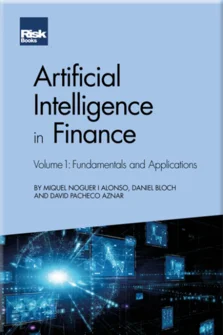Introduction
Miquel Noguer i Alonso, Daniel Bloch and David Pacheco Aznar
Introduction
1.1 ARTIFICIAL INTELLIGENCE
In Chapter 2 we first provide an overview of artificial intelligence (AI), delineating what constitutes AI in addition to diving into different definitions of human and artificial intelligence. Then, we give a historical exposition, tracing the evolution of AI from its nascent stages to its current state. This historical context sets the stage for a deeper exploration of different contexts in which AI can be applied. Those are then classified according to characteristics such as observability, sample size or dimensionality, providing a computational framework to describe how AI can operate in real-world scenarios. A sector-specific application of AI is explored in the section on artificial intelligence in finance (Section 2.6), which showcases the transformative impact of AI in the financial sector and describes some of the main areas of research, such as algorithmic trading, fraud detection and financial forecasting. We then dive into a mathematical description of the realms of supervised, unsupervised and reinforcement learning, devoting a section to each major learning paradigm and establishing the mathematical foundations and algorithms that underpin
Copyright Infopro Digital Limited. All rights reserved.
As outlined in our terms and conditions, https://www.infopro-digital.com/terms-and-conditions/subscriptions/ (point 2.4), printing is limited to a single copy.
If you would like to purchase additional rights please email info@risk.net
Copyright Infopro Digital Limited. All rights reserved.
You may share this content using our article tools. As outlined in our terms and conditions, https://www.infopro-digital.com/terms-and-conditions/subscriptions/ (clause 2.4), an Authorised User may only make one copy of the materials for their own personal use. You must also comply with the restrictions in clause 2.5.
If you would like to purchase additional rights please email info@risk.net









